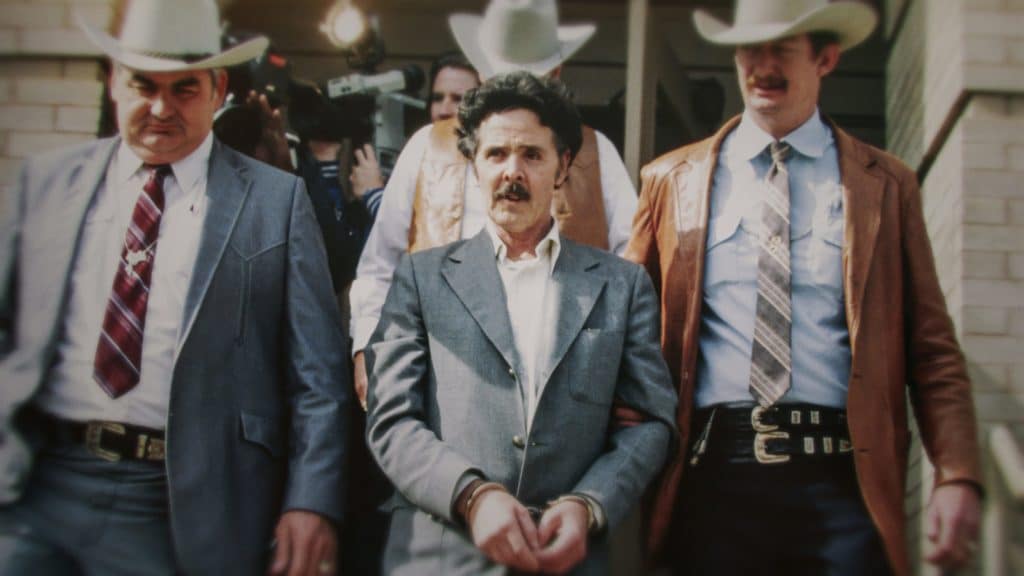As long as humanity has existed, so have the shadowy corners of the human imagination. Some things terrify us on a primordial level, and in ancient times, these fears would sometimes morph into the forms of terrifying mythological creatures, ranging from child-snatching demons to the enemies of gods.
Where there are people, there are mythological creatures. While some are benevolent, there is a certain fascination associated with the unsettling and disturbing sorts.
Let’s explore some of the most terrifying mythological creatures in history from all around the world.
Most Terrifying Greek Mythological Creatures
Typhoon
Feared almost as much as the storm of the same name is the mythological monster Typhoon. Said to be the child of Gaia and Tartarus, Typhoon was not a god or a titan, but instead, was some sort of monstrosity that was unleashed on the world.
In appearance, Typhoon was said to have the upper body of a human, but a bottom half that consisted of thousands of snakes. He was winged, with glowing eyes, and was almost too large to comprehend.
Lucky for the ancient Greeks, it’s said that Zeus imprisoned Typhoon within a mountain, but that the monster’s anger bubbles over in volcanic activity.
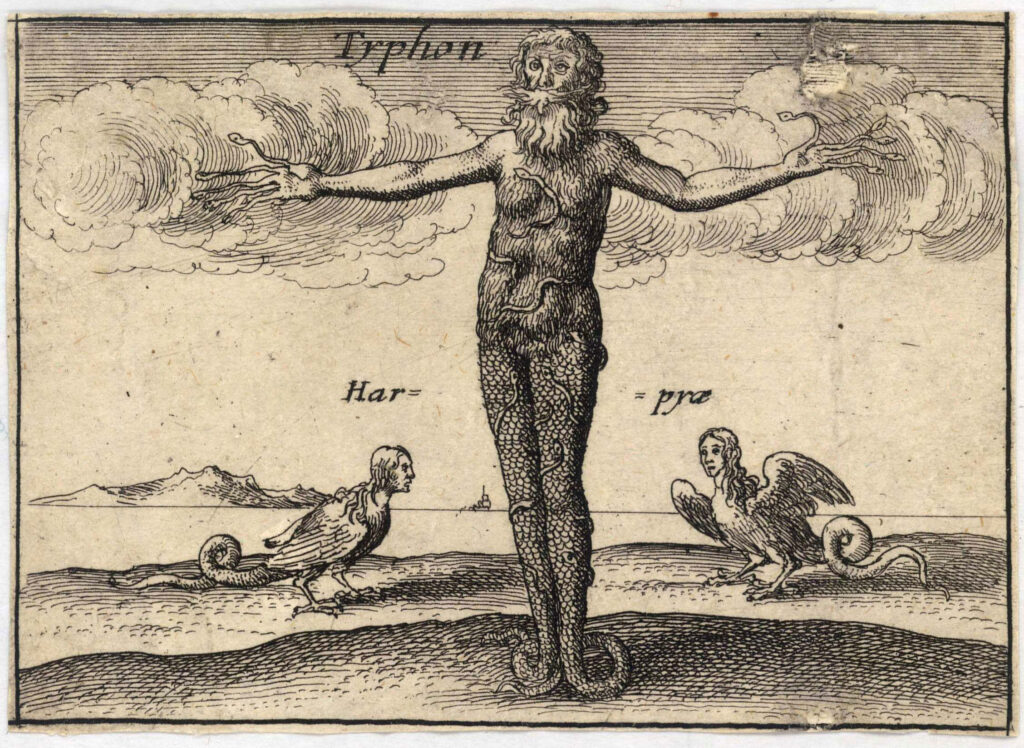
Hydra
Famous for being the monster in Hercules’ Second Labor, Hydra was a terrifying thing even before the god came to slay it.
Hydra was an immense snake or serpent with many heads. Some depictions have a Hydra with three heads, but the number varies throughout other depictions.
It was said that Hydra could regenerate heads that were lost and that when one was cut away, two more would grow in its place.
To counteract this, Hercules cauterized each neck as he decapitated the Hydra so regeneration was impossible, and in this way, he was finally able to defeat the monstrous serpent.
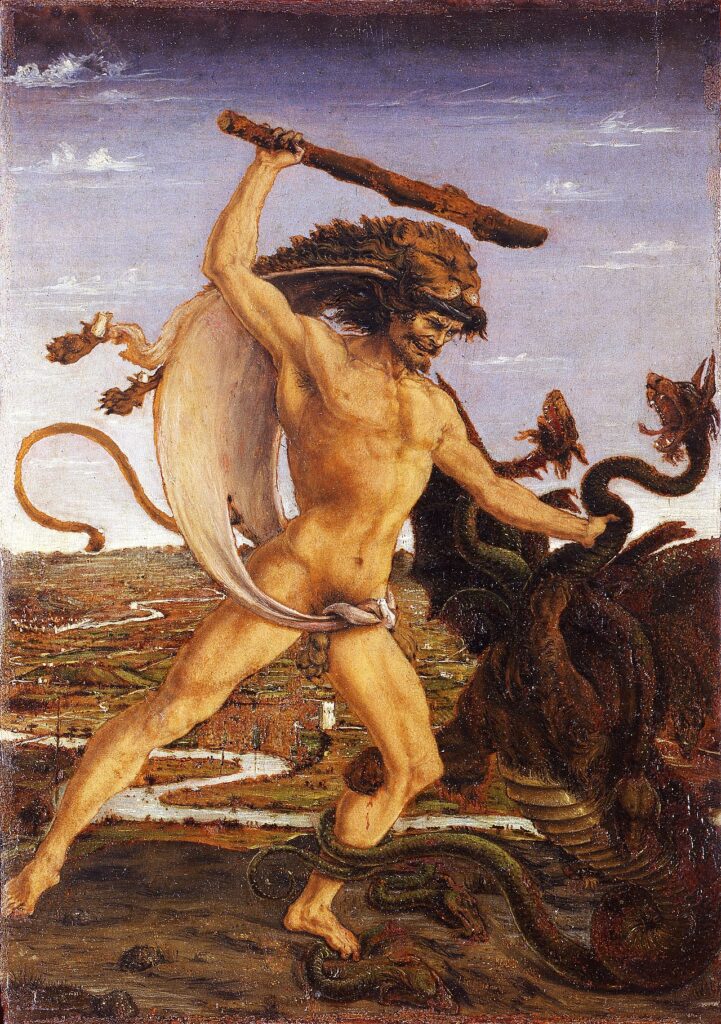
Most Terrifying Native American Mythological Creatures
Wendigo/Windigo
One of the most chilling mythological creatures is undoubtedly the Algonquin Wendigo. Wendigos might be so frightening because they aren’t just monsters–they also force the humans they come into contact with to commit monstrous actions.
A Wendigo is a malevolent spirit, so it doesn’t always have a physical form. But when it does, it’s pictured as a bipedal deer, often with a skeletal face or other features.
The Wendigo was once a hunter who had to resort to eating human flesh so he didn’t starve to death. Once the deed had been done, he became the Wendigo and was cursed to crave human flesh forever.
A Wendigo is said to be able to possess a person and force them to feel the same undeniable hunger for human flesh that it does, making the person go out to kill others.
Qalupalik
The Arctic region, with its miles and miles of ice and frozen landscape, is the perfect place for terrifying mythological creatures to become legends. One such creature is the Qalupalik, a humanoid sea monster that is known for stealing children.
The Qalupalik, a slimy green monster with the top half of a human, will sing or tap its fingers on the ice to lure children in.
Once it steals a child, the Qalupalik will take it beneath the waves and devour the unsuspecting youth. It is said the Qalupalik must consume children to remain immortal.
Most Terrifying Norse Mythological Creatures
Draugr
Zombies are common in all sorts of mythology, but the Norse interpretation of the undead walker is more frightening than many of the others.
Draugr are endlessly restless, always on the move in search of their victims. They smelled of rotting flesh and were depicted as either dark blue or black.
Most unsettling of all is the idea that they were inhumanly strong and that if someone was attacked, the victim would soon become a draugr, too. They could only be dealt with through decapitation, burning, and eventually discarding the draugr’s ashes in the sea.
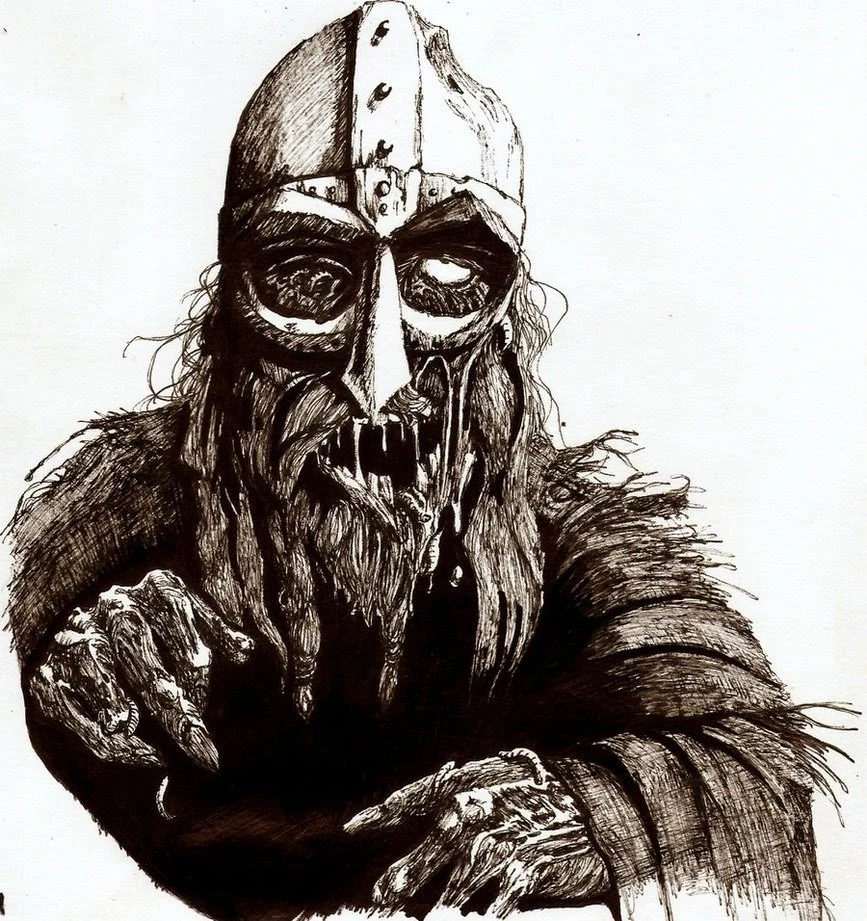
Garm
Where the Greek mythologies had Cerberus, the Norse had Garm. Garm, like Cerberus, was the guard dog of the underworld, or in Norse mythology, Hel, the land of the dead.
References to Garm are few, but those we do have paint a terrifying picture. Garm was known to be a ferocious guardian, often appearing covered in blood.
His howls and barks were said to be spine-chilling. This mythological hellhound also heralds Ragnarök, howling and breaking his chain to join the final battle between the gods.
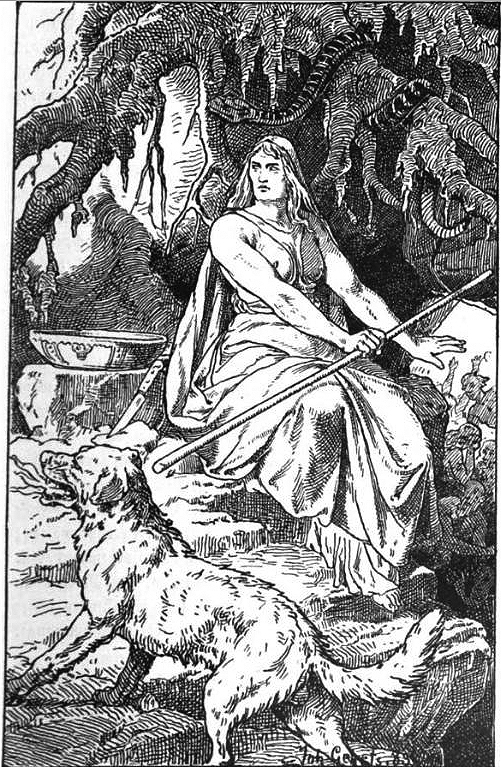
Most Terrifying Egyptian Mythological Creatures
Ammit
Ammit, the devourer of the dead, is another chimera-like creature, that combines different animals to create something horrifying.
With the front legs of a lion, the head of a crocodile, and the hind legs of a hippopotamus, Ammit was all the animals most feared by ancient Egyptians merged into one horrifying beast.
Ammit wasn’t a god but could be commanded by them, usually to devour a soul that was found to be unworthy of the afterlife.
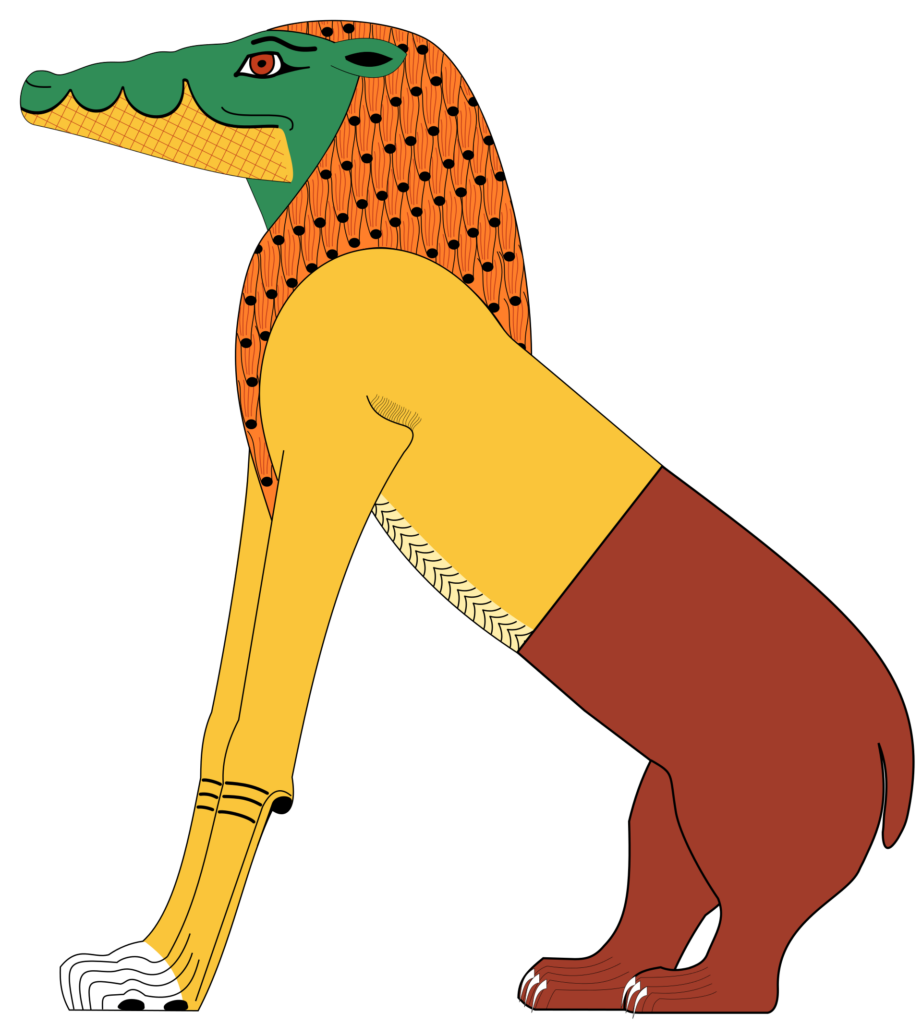
Apep
Taking the form of an immense snake, the 50-foot Apep was known as the enemy of the light. Apep wasn’t frightening to Egyptians on a personal level, but instead on a cosmic one.
The legends of this serpent-like monster say that Ra, the god of the sun, had to fight Apep each morning in order for the sun to rise.
Apep could also exist beneath the ground, where its movements were thought to be the cause of earthquakes.
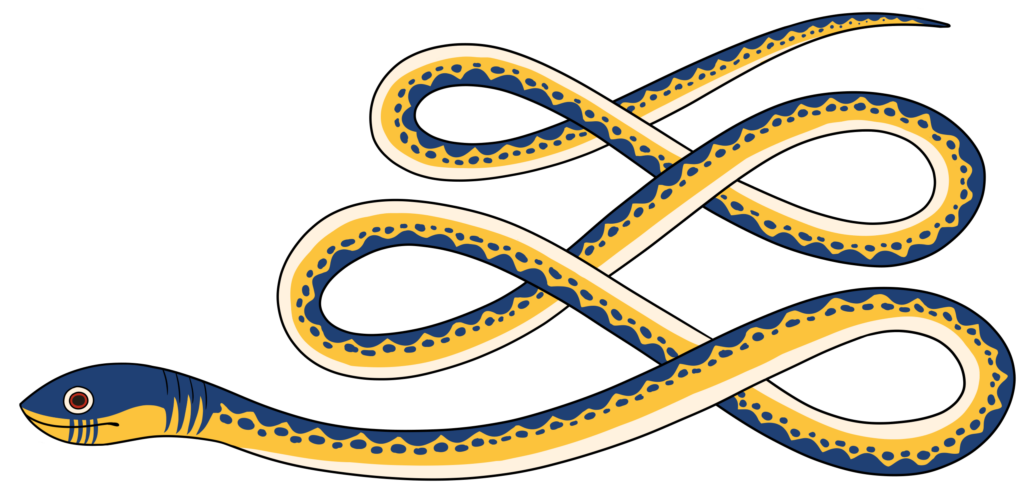
Most Terrifying Creatures in Japanese Mythology
The Gashadokuro
The human skeleton has always played a part in frightening artwork. So it’s no wonder that something like the Gashadokuro would be a terrifying mythological creature in ancient Japan.
Gashadokuro aren’t just skeletons, though. They’re giant skeletons made from the bones of many different people. Legend says that Gashadokuro would come about after mass casualties where spirits couldn’t find rest. Instead, they would combine into one enormous skeleton to seek vengeance on the living.
Namazu
Somewhat unconventional as far as terrifying mythological creatures go, the Namazu was scary in a different way than some of the others.
The Namazu takes the form of a giant catfish that rests beneath the Japanese isles and isn’t necessarily frightening in appearance. Instead, the Namazu strikes fear into its victims by causing natural disasters.
When the Namazu becomes angry, it wiggles, causing devastating earthquakes. Because of how powerful it was seen to be and how widespread the destruction caused by the angry fish, it was often worshiped as a god.
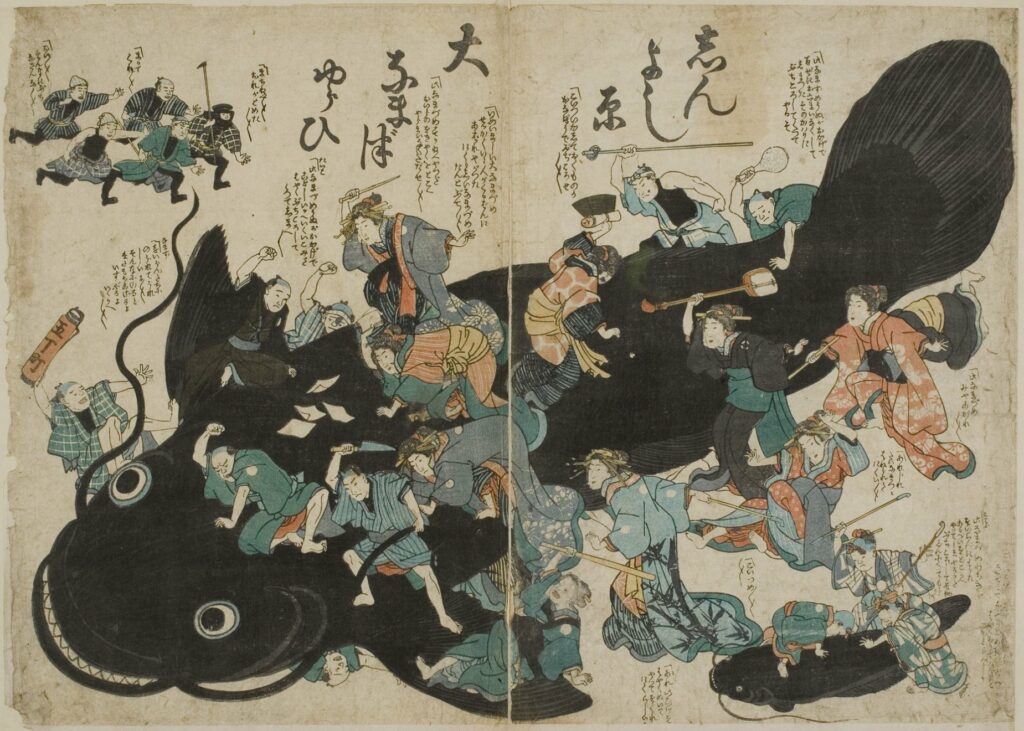
Most Terrifying Creatures in Chinese Mythology
E Gui
Also called a hungry ghost, the e gui was once a normal human. To become an e gui, the person must have committed the sin of greed during life, and in death, will therefore be cursed to experience eternal hunger.
E gui can appear in many different forms, maybe depending on the type of greed the person displayed before death. Sometimes they appear as huge-bellied people with tiny, pin-hole mouths–always hungry but never satisfied. Other times they may belch fire or emit a horrible smell.
Jiangshi
Another zombie equivalent is the Jiangshi. These monstrous mythological creatures are the corpses of the dead who have been resurrected.
Jiangshi can appear as nearly normal if the corpse has only recently passed, but they also appear as specters of rotting flesh.
The spirit of the Jiangshi is sealed into the corpse using a paper talisman stuck onto its forehead. Written on this paper is a sealing spell. Jiangshi move by hopping, and their goal is to suck the lifeforce, or qi, from the living.
Most Terrifying Creatures in Indian Mythology
Acheri
The Acheri of Northern India is frightening not just for its appearance, but what it represents. The Acheri is a ghost, but not just any ghost. It is the ghost of a little girl, who was either killed, neglected until death, or who perished in some tragic way.
Acheri live in the mountains and sleeps during the daylight hours. When they approach civilization, they sing and play a small gong called a tam-tam.
An Acheri is a bad omen, and those who hear one are said to be near death or are about to experience the death of a loved one, usually a child. Acheri are also said to bring disease and are skeletal in appearance.
Baak
In the Assam area of northeastern India, a malevolent water monster known as the baak resides.
Fond of fish, the baak is known to be especially troubling to fishermen, pulling them into the water and drowning them.
Once the fisherman is dead, the baak will possess his body and then go take his place within his family, slowly working to kill all of them, too.
Baak can be avoided by carrying a torn fishing net, one of the few things the mythological creature is afraid of.
While baaks are known to kill fishermen, they are kinder to children, usually playing mischievous games or tricking the children instead of harming them.
Most Terrifying Creatures in European Folklore
Nuckelavee
Ireland and Scotland are full of tales of horse-like creatures luring unsuspecting people to their deaths, but none cut as terrifying a form as the Nuckelavee.
Described as a skinless horse with the (also skinless) form of a human on its back, the Nuckelevee had clawed arms (from the human part) that were so long they dragged on the ground.
It had one single eye, and like other horse-based Scottish monsters, the Nucklevee would drag its unsuspecting victims into the water to die. It also had foul breath that, once inhaled, would eventually kill the person who breathed it in.
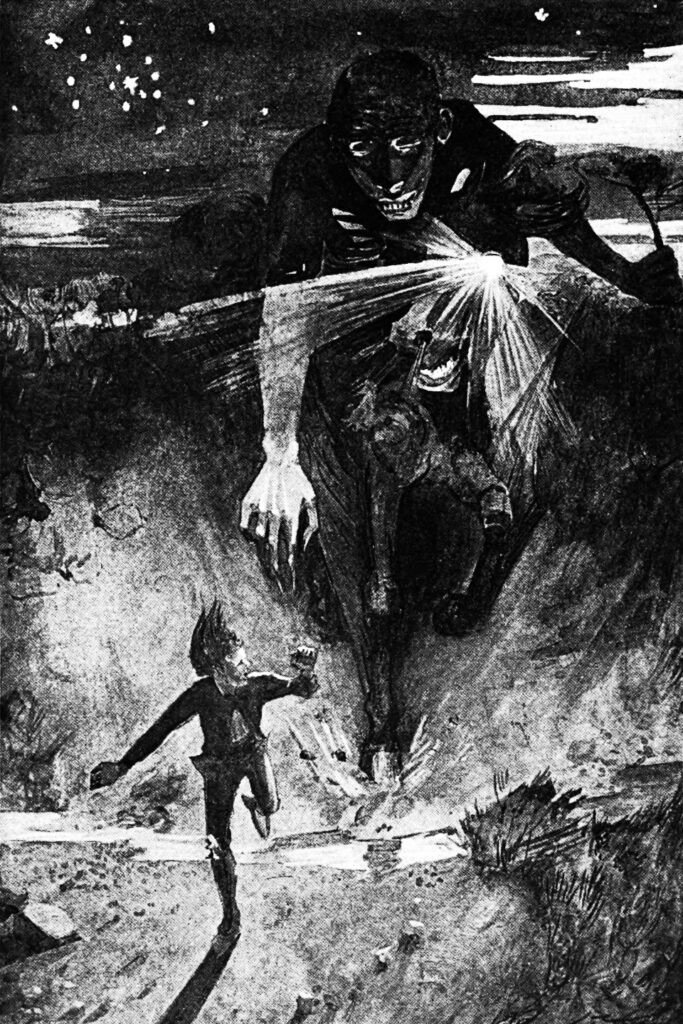
Banshee
In theory, the banshee might seem like more of a tragic figure than a terrifying mythological creature. But when she opens her mouth and screams, it becomes readily apparent why the banshee is considered to be such a frightening thing.
The banshee isn’t depicted as wishing harm herself, but when she is heard, it’s said that death is imminent for someone in the home.
Banshee act as a bad omen, using her scream to inform families of upcoming deaths, but her scream is so bone-chilling to hear that it can scare someone nearly into the grave.
Banshees are depicted as veiled women who float above the ground. They can be young or old, but their dresses and veils are often tattered and torn.
Most Terrifying Creatures in African Folklore
Adze
Vampires of sorts exist in most mythology, and for the people of Togo and Ghana, their vampiric mythological monster takes the form of the adze.
Adze will travel in the form of fireflies, and in this form, it will slip into homes and drink the blood of those who are sleeping. Those who the adze fed on would become sick and die in time. If it is caught, the adze will transform into its human shape. In this form, the adze could possess people, turning them into witches.
Tikoloshe/Tokoloshe
Unlike a lot of mythological creatures on this list, sightings of the Tikoloshe also called the Tokoloshe, are still quite common.
Originating from the Bantu people in South Africa, the Tokoloshe is a small water spirit that resembles a dwarf. Tokoloshe can also take the form of a small hairy man, and they were believed to steal the lives of those sleeping at night when they visited.
There are two main versions of the tokoloshe: the first version is the water spirit that would scare children, cause illness, and sometimes even steal the lives of the sleeping. The other version of the tokoloshe is a sort of zombie creature created by a witch doctor that can be unleashed on a certain target.
Most Terrifying Creatures in South American Folklore
Coco
Another mythological creature that targets children is the South American coco. The coco stalks the night, wearing various forms.
Sometimes it’s just a simple shadow, whereas other times it will take the form of terrifying creatures to strike fear into the hearts of children. One of its most unique forms is that of a gaunt figure with the head of a pumpkin.
Coco is the South American equivalent of the boogeyman, and tales of it are used to keep children well-behaved and in their beds at night. Otherwise, the coco may snatch them and never let go.
El Silbón
The El Silbón is another portent of death, this time taking the form of a whistling man carrying a bag of bones. El Silbón is a body collector, and the origin of his legend is a cautionary tale about the horrors of immense greed.
In the tale of El Silbón, a boy kills his father when the man returns without any meat from his hunt. In retaliation, the grandfather kills the boy and feeds him to the hounds. Now, the boy wanders the roads as El Silbón cursed to carry the bones of his father forever.
References
“Uncanny, Preternatural Monsters”
https://www.merriam-webster.com/wordplay/monsters-of-the-day
“10 Terrifying Mythological Creatures from Around the World”
https://www.thecollector.com/terrifying-mythological-creatures/
